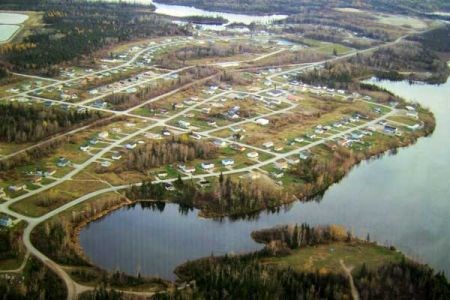For many years, Constance Lake First Nation simply stood by and watched the world go by.
Now the community is doing the exact opposite. The Northern Ontario reserve is in what it calls, a “participation stage.”
Situated 40 kilometres west of Hearst alongside the scenic shores of Constance Lake, the 7,686-acre reserve is home to 1,470 members of Ojibway and Cree ancestry.
“When we stand by, nothing ever happens,” said Ernest Moore, business development officer for Constance Lake First Nation. “Now we're going to have to participate with the economy.”
In an effort to boost its workforce, Constance Lake First Nation has recently begun offering some capacity training and education workshops for those on the reserve.
With more than 800 people living on the reserve, Moore said that 750 of them are considered in the employment category, and are willing and able to work.
“With these people, we're trying to do training assessments and educational assessments,” he said. “They know what goals and objectives they have, so we're helping them trying to achieve them.”
For the educational workshops, Constance Lake First Nation welcomed, for the first time, a few community colleges into its territory.
In the past, if members had the yearn to learn, they had to attend those workshops in Hearst and Timmins. Now, they have the benefit of having them in their own backyard.
“We had a couple of them already, and the attendance was quite festive,” said Moore. “There's a good chunk of people coming to see what it's all about.”
Since the first one in the fall of 2011, Moore said an average of 50 to 100 people have been attending their workshops.
They've also had workshops from Elders for traditional skills in an effort to create some culture retention.
“As we're building up our relationship with conventional society, we are starting to see that we're losing our culture a bit,” said Moore. “You can go and become a miner, but at the same time, there's nothing wrong with still retaining traditional skills, such as going out and catching fish.”
Spearheaded by the Constance Lake employment office, business development office, and its social office, the workshops last two to three days once a month.
The First Nation also has a partnership initiative with Hearst and a joint venture with a logging company, G. Morin Logging.
As well, Amik Logging, a 100 percent First Nation company in Constance Lake, receives contracts from Tembec in Hearst.
The 23-employee outfit has harvested 40,000 cubic metres of logs for the forestry giant.
“But we're preparing ourselves for the big development that's just outside our area, the Ring of Fire,” said Moore. “What we're trying to do, is we're trying to build up our capacity to do projects with the Ring of Fire.”
Moore said $5 million has been invested in heavy equipment and 37 equipment operators are ready to go.
Moore couldn't comment on any specifics regarding the massive mine development in the James Bay lowlands, but did say that it is consulting with Cliffs Natural Resource through the Matawa Tribal Council.
Another project on the horizon in the area is the Kabinakagami River Hydro Project, proposed by Toronto-based Northland Power.
The company has entered into a partnership with Constance Lake to develop a series of run-of-river hydro projects totalling up to 26 megawatts (MW) on the river.
Northland Power develops, builds, owns and operates clean and green power generation projects in Ontario, Quebec and Saskatchewan.
The combined facilities generate about 1,004 MW of electricity.
“That's supposed to be happening this summer,” said Moore. “We'll be located at their sites to do some sub-contracting.”
The reserve has another partnership with Toronto-based miner PhosCan Chemical on its Martison Phosphate Project, 100 kilometres from Hearst.
While still in the exploration stage, the First Nation builds winter routes for the company, sets up the field camps and hauls water on a daily basis.
“We have about 20 people working there altogether,” said Moore. “But it's only a small project that lasts three months.
“They'll be carrying on with more exploration next fall, and hopefully it will be much bigger.”
Moore said the PhosCan job provides work for 35 to 40 people, but he's hoping to see it grow to the hundreds employed by Detour Gold at its construction camp near Cochrane.
“We're trying to build up our scope of work, rather than just posing on the reserve,” he said. “We're trying to focus outside our reserve boundaries and start working with conventional society.
“There's going to be more from here.”




